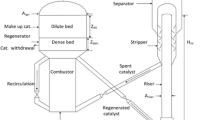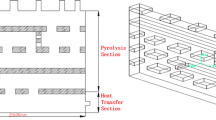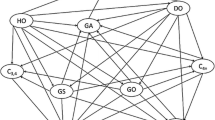Abstract
Pyrolysis of hydrocarbons is an important commercial process for the production of ethylene, propylene and 1,3 butadiene. These low molecular weight olefins are among the most important base chemicals for the petrochemical industries for polymer production. A simulation program of the reaction kinetics and coke formation inside the coils of a thermal cracking unit can provide information on the effects of operating conditions on the product distribution. The aim of this study was to develop a mechanistic reaction model for the pyrolysis of LPG that can be used to predict the yields of the major products from a given LPG sample with commercial indices. A complete reaction network, using a rigorous kinetic model, for the decomposition of the LPG feed has been developed, which is used for the simulation of industrial LPG crackers. This model has been adapted using industrial data for the pyrolysis yields of LPG. The present paper attends on the asymptotic coking mechanism and describes the development of a kinetic coking model in the pyrolysis of LPG. Detailed and accurate information about the product distribution, growth of coke layer, the evolution of the tube skin temperatures can be obtained from this simulation. Simulations of this kind can be used to optimize the furnace operation. They can be used as a guide for the adaptation of the operating variables aiming at prolonging the run length of the furnace. The reactor model, as well as kinetic scheme, is tested in an industrial cracking furnace.
Similar content being viewed by others
References
Dente, M. and Ranzi, E.,Pyrolysis. Theory and industrial practice, Albright, L. F., Crynes, B. L. and Corcoran, W. H., Chapter 7, Academic Press, New York, USA (1983).
Dente, M., Ranzi, E. and Goossens, A. G., “Detail prediction of olefin yields from hydrocarbon pyrolysis through a fundamental simulation model (SPYRO),”Comput. Chem. Eng.,3, 61 (1979).
Froment, G., Van de Steene, B. O. and Van Damme, P., “Thermal cracking of ethane and ethane-propane mixtures,”Ind. Eng. Chem. Process Des. Dev.,15, 495 (1976).
Heyndericks, G. J. and Froment, G. F., “Simulation and comparison of the run length of an ethane cracking furnace with reactor tubes of circular and elliptical cross sections,”Ind. Eng. Chem. Res.,37, 914 (1998).
Kopinke, F. D., Zimmermann, G., Reyners, G. C. and Froment, G. F., “Relative rates of coke formation from hydrocarbons in steam cracking of naphtha. 2. Paraffins, naphthenes, mono, Di and cycloolefins and acethylenes,”Ind. Eng. Chem. Res.,32, 56 (1993).
Kopinke, F. D., Zimmermann, G. and Nowak, S., “On the mechanism of coke formation in steam cracking conclusions from results obtained by tracer experiments,”Carbon,56 (2), 117 (1988).
Niaei, A., Towfighi, J., Sadrameli, M. and Karimzadeh, R., “The combined simulation of heat transfer and pyrolysis reactions in industrial cracking furnaces,”Applied Thermal Engineering,24, 2251 (2004).
Sundaram, K. M. and Froment, G., “Modeling of thermal cracking kinetics. 3. Radical mechanisms for the pyrolysis of simple paraffins, olefins, and their mixtures,”Ind. Eng. Chem. Fund.,17 (3), 174 (1978).
Tesner, P. A., “Kinetics of pyrolysis carbon formation,”Chemistry and Physics Carbon,19, 65 (1984).
Towfighi, J., Sadrameli, M. and Niaei, A., “Coke formation mechanisms and coke inhibiting methods in pyrolysis furnaces,”Journal of Chem. Eng. of Japan,35 (10), 923 (2002).
Towfighi, J., Nazari, H. and Karimzadeh, R.,Simulation of light hydrocarbons pyrolysis using radical mechanism, APCChE/CHEMECA 93, Melbourne, Australia (1993).
Van Damme, P. S. and Froment, G. F., “Scaling up of naphtha cracking coils,”Ind. Eng. Chem. Proc. Des. Dev.,20, 366 (1981).
Author information
Authors and Affiliations
Corresponding author
Rights and permissions
About this article
Cite this article
Towfighi, J., Niaei, A., Karimzadeh, R. et al. Systematics and modelling representations of LPG thermal cracking for olefin production. Korean J. Chem. Eng. 23, 8–16 (2006). https://doi.org/10.1007/BF02705685
Received:
Accepted:
Issue Date:
DOI: https://doi.org/10.1007/BF02705685




